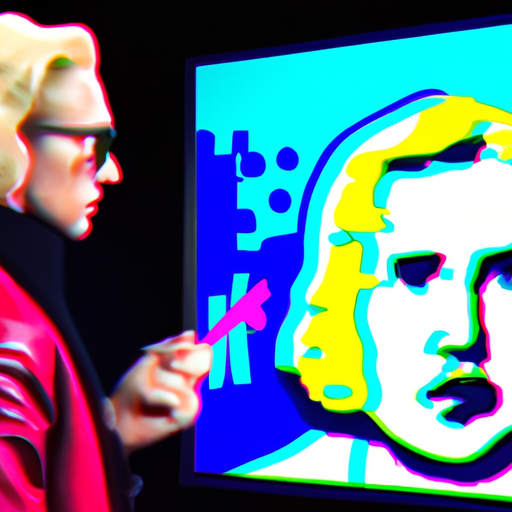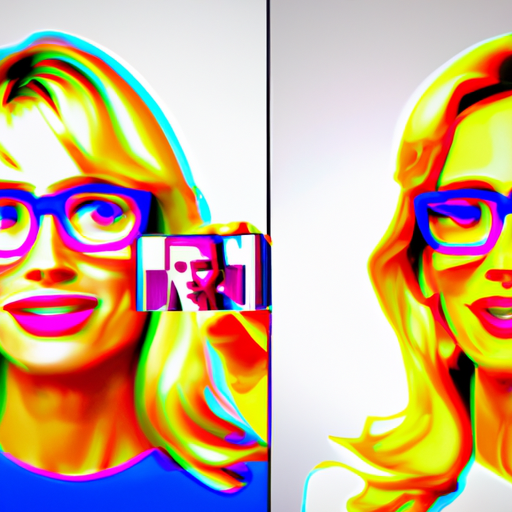
-
Table of Contents
- The Impact of Augmented Reality (AR) on Illustration
- 1. Enhancing Traditional Illustration Techniques
- 2. Bridging the Gap Between Physical and Digital Worlds
- 3. Expanding Audience Engagement and Interaction
- 4. Overcoming Technical and Accessibility Challenges
- 5. Future Developments and Possibilities
- Summary
The Impact of Augmented Reality (AR) on Illustration

Augmented Reality (AR) has emerged as a transformative technology that is revolutionizing various industries, including illustration. AR combines the real world with virtual elements, enhancing the way we perceive and interact with our surroundings. In the realm of illustration, AR has opened up new possibilities for artists, designers, and consumers alike. This article explores the impact of AR on illustration, examining its benefits, challenges, and potential future developments.
1. Enhancing Traditional Illustration Techniques
AR has breathed new life into traditional illustration techniques, allowing artists to create immersive and interactive experiences. By overlaying digital elements onto physical artwork, AR enables illustrations to come alive in ways never before possible. For example, an artist can use AR to add animations, sound effects, or even 3D models to their illustrations, creating a dynamic and engaging visual narrative.
One notable example of AR enhancing traditional illustration techniques is the “Wonderscope” app. This app allows children to interact with illustrated characters and stories by using their mobile devices. The illustrations in the app are brought to life through AR, enabling children to actively participate in the storytelling process. This fusion of traditional illustration and AR technology not only captivates young audiences but also encourages their creativity and imagination.
2. Bridging the Gap Between Physical and Digital Worlds
AR has the unique ability to bridge the gap between the physical and digital worlds, offering a seamless integration of both realms. This integration has significant implications for illustrators, as it allows them to create artwork that can be experienced in both traditional and digital formats.
For instance, an illustrator can use AR to transform a physical illustration into a digital experience. By scanning the illustration with a mobile device, viewers can unlock additional content, such as behind-the-scenes videos, artist commentary, or interactive elements. This not only adds value to the artwork but also provides a deeper understanding of the artist’s creative process.
Furthermore, AR can also be used to bring digital illustrations into the physical world. Artists can create AR markers or triggers that, when scanned, display the digital illustration in a real-world environment. This opens up new possibilities for showcasing artwork in galleries, exhibitions, or even public spaces, blurring the boundaries between traditional and digital art forms.
3. Expanding Audience Engagement and Interaction
AR has the power to transform passive viewers into active participants, enhancing audience engagement and interaction with illustrations. By incorporating AR elements, illustrators can create immersive experiences that captivate and involve viewers on a deeper level.
For example, the “Quiver” app allows users to color in printed coloring pages, which are then brought to life through AR. The colored illustrations become animated and interactive, providing a unique and engaging experience for both children and adults. This interactive aspect of AR illustrations not only entertains but also encourages creativity and exploration.
Moreover, AR can also be used to enhance educational illustrations. By overlaying additional information, such as text, images, or videos, onto educational illustrations, AR can provide a more comprehensive learning experience. Students can interact with the illustrations, gaining a deeper understanding of the subject matter and making learning more engaging and enjoyable.
4. Overcoming Technical and Accessibility Challenges
While AR offers numerous benefits to the field of illustration, it also presents certain challenges that need to be addressed. One of the main challenges is the technical complexity of creating AR experiences. Artists and designers need to acquire the necessary skills and tools to develop AR content, which can be time-consuming and require a learning curve.
Additionally, accessibility is another challenge that needs to be considered. Not all viewers may have access to the required technology, such as smartphones or AR-enabled devices, to fully experience AR illustrations. This can limit the reach and impact of AR-enhanced artwork, especially in areas with limited technological infrastructure.
5. Future Developments and Possibilities
The future of AR in illustration holds immense potential for further innovation and creativity. As technology continues to advance, we can expect to see even more seamless integration of AR into the illustration process.
One exciting development is the emergence of AR glasses, such as the Microsoft HoloLens or the Magic Leap One. These devices offer a hands-free AR experience, allowing artists to directly interact with their illustrations in a three-dimensional space. This could revolutionize the way illustrations are created, providing a more intuitive and immersive workflow.
Furthermore, advancements in AR technology may also lead to the development of more accessible and user-friendly tools for creating AR content. This would enable a broader range of artists to incorporate AR into their illustrations, democratizing the medium and fostering a more diverse and inclusive creative community.
Summary
Augmented Reality (AR) has had a profound impact on the field of illustration, revolutionizing traditional techniques and bridging the gap between physical and digital worlds. AR has enhanced traditional illustration techniques by adding interactive and immersive elements to artwork, as seen in apps like “Wonderscope” and “Quiver.” It has also expanded audience engagement and interaction, making illustrations more dynamic and participatory.
However, challenges such as technical complexity and accessibility need to be addressed to fully harness the potential of AR in illustration. The future of AR in illustration holds exciting possibilities, including the integration of AR glasses and the development of more accessible tools for creating AR content.
Overall, AR has opened up new horizons for illustrators, offering endless opportunities for creativity, engagement, and innovation. As the technology continues to evolve, the impact of AR on illustration is likely to grow, transforming the way we perceive and interact with visual storytelling.
